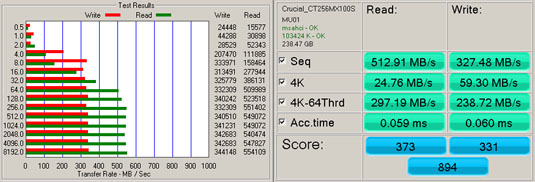Original URL: https://www.theregister.com/2014/06/17/review_crucial_mx100_256gb_ssd/
Crucial MX100 256GB SSD: Cut-throat competition in flash land
Keenly priced sweet-spot storage
Posted in Personal Tech, 17th June 2014 09:03 GMT
Review Micron subsidiary Crucial has caused huge waves in the consumer SSD market with its low-cost M500 drive range – and then gave its competitors further aggravation with its M550 series refresh this year. It’s only been about three months since the M550 launch but Crucial is back with a new range of drives to cause further mayhem, in the shape of the MX100.
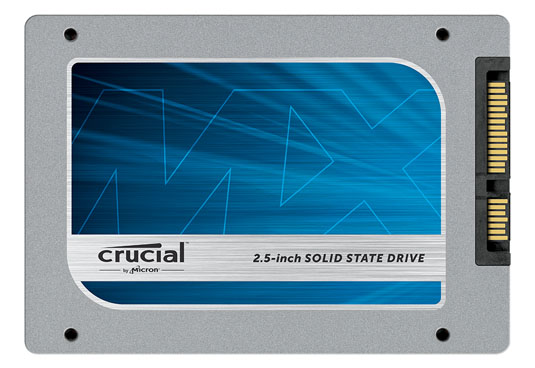
Crucial eats away at SSD prices yet again with the MX100
At launch the MX100 family comprises just three capacities: 128GB, 256GB (my review model) and the flagship 512GB. Unlike the last two series of drives there isn’t a 1TB (or near 1TB) drive, so if you want a Crucial drive above the 512GB mark you’ll have to find a M500 (960GB) or a M550 (1TB).
With the MX100, Crucial is firmly aiming at the consumer market as very large capacity SSDs are still considered something of a niche. Hence, the company sees no need to have a mega drive in the MX100 range, even though it is regarded as the M500’s successor. The new range will not only cause pricing problems for the competition, but, it has to be said, Crucial’s own M550 range as well.
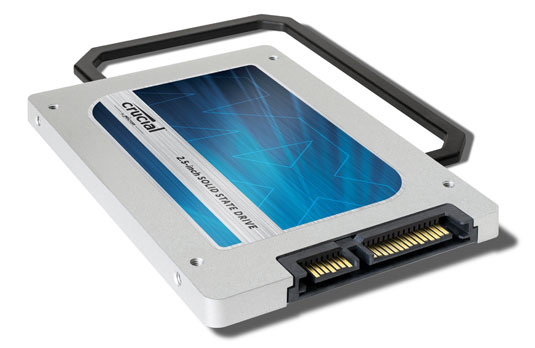
Spacer provided to bridge the gap in some laptops storage transplants
At launch, the entry level 128GB drive costs £56, a mere three pounds more expensive than the outgoing M500 120GB drive and a tenner cheaper than the equivalent M550 drive. The middle of the range 256GB MX100 costs £80, a fiver cheaper than the 240GB M500 and an impressive £30 cheaper than the 256GB M550. The flagship 512GB MX100 continues the trend and at £159 it’s £12 cheaper than the 480GB M500 and an amazing 50 notes cheaper than the 512GB M550.
The reason that Crucial can get so hardcore on price is that the new drives use the latest Micron 16nm MLC NAND which is cheaper to produce than the NAND in both the M500 and M550. How so? It’s because of the smaller process. The new NAND is architecturally the same as the companies 20nm MLC with the same 128Gbit density, but with a die shrink which allows Micron to get nearly 6TB of storage per 300mm wafer as opposed to the just over 4TB using the 20nm process.
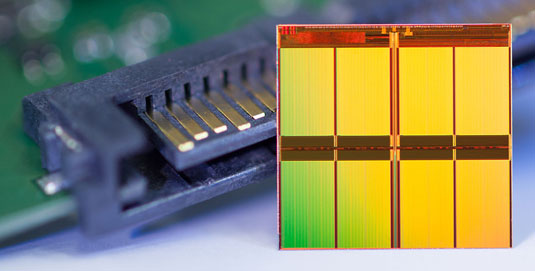
Cost saver: a smaller die size gets more chips per wafer
Once inside the drive you could be forgiven for thinking that you’ve opened a M500 by mistake as the PCB looks identical. In fact, the only change is the NAND type, as the MX100 uses the same eight-channel Marvell 88SS9189 controller as the M550. To get to its 256GB capacity, the drive uses 16 x 16GB NAND modules, eight per side of the PCB.
Form and function
Even at this price point Crucial has made sure that all the tasty features of the M550 are carried through to the MX100; power loss and thermal protection, AES-256bit, TCG Opal 2.0 and IEEE-11667 hardware encryption technologies and RAIN (Redundant Array of Independent NAND) to protect against block failures.
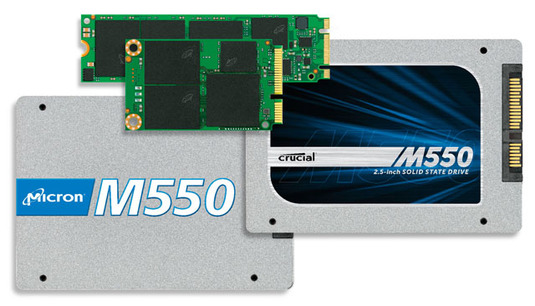
Crucial's M550 comes in a variety of form factors, but the MX100 is 2.5in, 7mm-only
It also supports DevSleep, which is handy for notebook use, but Crucial is only releasing the MX100 series as 2.5in 7mm format. Currently there are no plans to build mSATA or M.2 versions, so there will be no MX100’s to fit the more svelte notebooks or ultraportables.
Crucial quotes Sequential Read speeds of up to 550MB/s across the three drives but the Sequential Write performance differs considerably between them. The 512GB is quoted as up to 500MB/s, the 256GB 300MB/s and the 128GB a lowly 150MB/s. When I tested the 256GB drive with the ATTO benchmark it gave figures of 554MB/s and 344MB/s respectively for the Read/Writes – pretty much in the ball park of what the company claims.
The Marvell controller isn’t concerned about what type of data it’s handling, which can be seen from the 4K test in Crystal Disk Mark. The default uncompressed data test produced scores of 29.72MB/s and 87.75MB/s for reads/writes, while switching to the compressed data test brought figures of 27.25MB/s for reads and 85.89MB/s for writes.
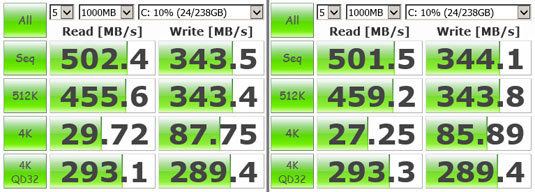
CrystalDiskMark – default test (left), compressible data text (right)
I then did some real life testing and by using the TeraCopy app I was able not only to get a time for file copy but also a MB/s figure. Copying a 50GB folder of mixed file types (28,523 files in total) took 10m 7s (@72MB/s), a 17GB Blu-Ray image took just 2m 26s (@112MB/s) and a 4GB image took a mere 34s (@113MB/s) to copy.
I then timed how long it took to open the 4GB image (300dpi) in Photoshop (2m 58s), re-render the image to 600dpi (18m 13s) and finally, how long it took to save the resulting 16GB image - in this case 11m 52s. The drive took four and a half minutes to install Office 2010.
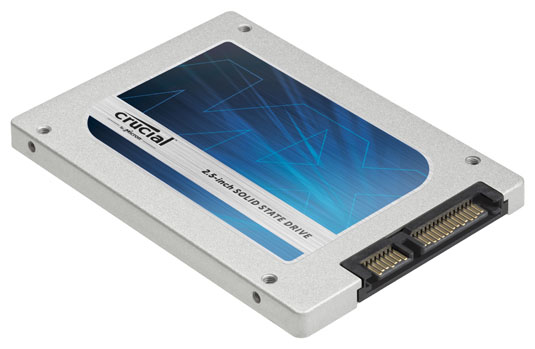
No mega 1TB bargains to be had but the 256GB model is a bit of a steal
The Reg Verdict
It may not be the fastest drive in the 250/256GB sweet spot but that price tag makes a compelling argument in favour of the Crucial drive regardless. For comparison, a 250GB Samsung 840 EVO costs around £116 while the 256GB Samsung 840 Pro is even dearer at £159.
If all you want is fast storage for everyday use without the price premium for the fastest on the block, then, quite frankly, the MX100 256GB SSD should meet your needs and save you a few quid into the bargain. ®
